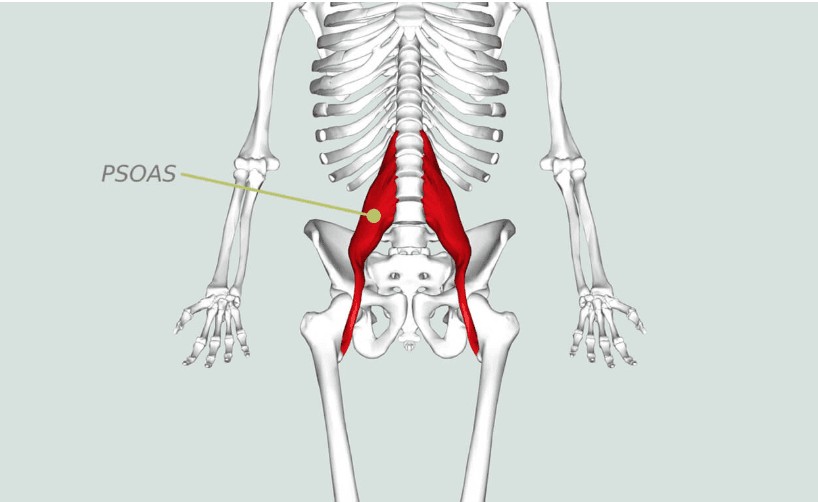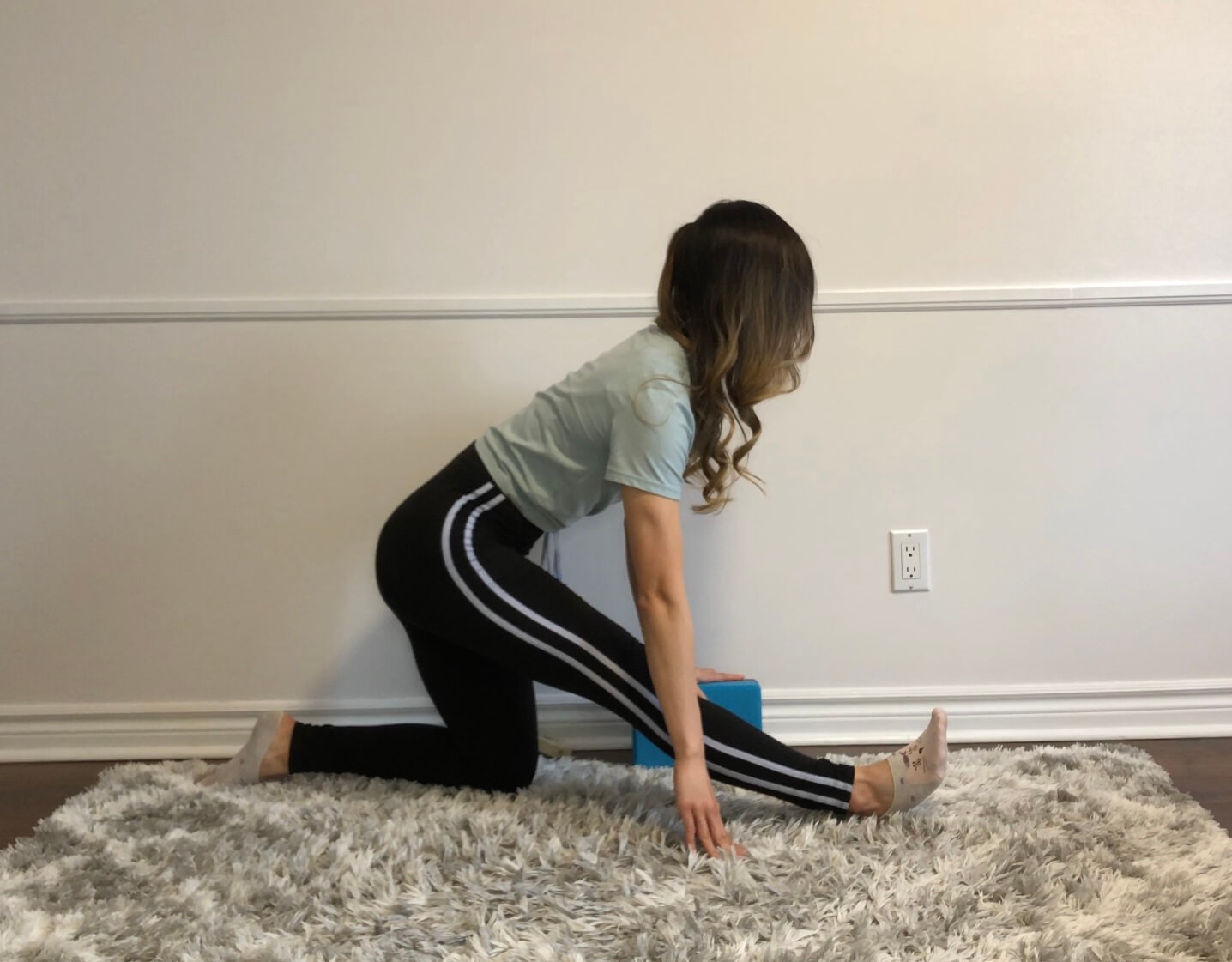Can Everyone Learn To Do The Splits? Yes, with consistent training and dedication, most people can achieve the splits, although the journey varies for each individual; let’s delve into the flexibility training needed. At LEARNS.EDU.VN, we believe in unlocking your body’s potential through targeted exercises and flexibility routines; we will show you how to do the splits safely. Discover the key factors that influence your flexibility and how to overcome challenges on your path to achieving this impressive feat.
1. Understanding the Splits: More Than Just Flexibility
The splits, a hallmark of flexibility and athleticism, involve extending your legs in opposite directions, either forward and backward (front split) or to the sides (side split), creating a 180-degree angle. More than just a party trick, achieving the splits demonstrates significant flexibility in your hamstrings, hip flexors, and groin muscles. While seemingly straightforward, accomplishing the splits requires understanding your body’s unique structure and limitations.
1.1 The Anatomy of Flexibility: Key Muscles Involved
Several muscle groups play crucial roles in achieving the splits. These include:
- Hamstrings: Located at the back of your thighs, these muscles are responsible for knee flexion and hip extension. Flexible hamstrings are essential for both front and side splits.
- Hip Flexors: Situated at the front of your hips, these muscles allow you to lift your knees and bend at the waist. Supple hip flexors are particularly important for achieving the front split.
- Groin Muscles (Adductors): Found on your inner thighs, these muscles draw your legs toward the midline of your body. Flexible groin muscles are vital for the side split.
- Calves: Located at the back of your lower legs, they help you straighten your legs when performing the splits.
1.2 Front Split vs. Side Split: What’s the Difference?
While both splits demonstrate impressive flexibility, they engage different muscle groups and require distinct techniques.
| Feature | Front Split | Side Split |
|---|---|---|
| Leg Position | One leg extended forward, the other backward | Legs extended laterally to the sides |
| Primary Muscles | Hamstrings, hip flexors, quadriceps | Groin muscles (adductors), hamstrings, hip abductors |
| Common Sports | Gymnastics, dance, martial arts | Gymnastics, martial arts, ice skating |
| Difficulty | Often considered more accessible for beginners due to more straightforward stretching. | May require more specialized stretching and a focus on groin flexibility. |



1.3 Assessing Your Current Flexibility Level
Before embarking on your journey to achieving the splits, it’s crucial to assess your current flexibility level. This will help you tailor your training and avoid injuries. Here are some simple tests:
- Hamstring Flexibility: Sit on the floor with your legs extended and try to touch your toes. Note how far you can reach.
- Hip Flexor Flexibility: Perform a kneeling hip flexor stretch. Observe the range of motion and any discomfort.
- Groin Flexibility: Sit with the soles of your feet together and gently press your knees towards the floor. Gauge the stretch in your groin muscles.
2. Factors Influencing Your Ability to Do the Splits
Several factors can influence your ability to achieve the splits, including genetics, age, body structure, and consistency of training. Understanding these factors will help you set realistic expectations and tailor your approach.
2.1 The Role of Genetics: Are Some People Naturally More Flexible?
Genetics play a role in determining your natural flexibility. Some individuals are born with more elastic connective tissues, allowing for a greater range of motion. However, genetics are not the only determinant; consistent training and proper technique can significantly improve flexibility regardless of your genetic predisposition.
2.2 Age and Flexibility: Is It Too Late to Start?
Flexibility naturally declines with age due to changes in collagen and connective tissues. However, it’s never too late to start working on your flexibility. With consistent training and modifications, individuals of all ages can improve their range of motion and work towards achieving the splits. According to a study by the American Academy of Orthopaedic Surgeons, adults can significantly improve their flexibility through regular stretching programs (1).
2.3 Body Structure: How Coxa Vara and Coxa Valga Affect Your Splits Journey
Structural differences in the hips, such as coxa vara and coxa valga, can impact your ability to achieve the splits.
- Coxa Vara: This condition involves a decreased angle between the head and neck of the femur and its shaft, limiting hip rotation.
- Coxa Valga: This condition involves an increased angle, potentially making splits training easier.
A consultation with a physical therapist can help you identify any structural limitations and tailor your training accordingly.
2.4 The Importance of Consistency: How Often Should You Stretch?
Consistency is key to improving flexibility. Aim to stretch at least 3-5 times per week, holding each stretch for 20-30 seconds. Regular stretching helps lengthen muscles and increase range of motion over time.
3. Preparing Your Body: Essential Stretches and Exercises
Before attempting the splits, it’s crucial to prepare your body with a series of targeted stretches and exercises. These will help improve flexibility, increase range of motion, and reduce the risk of injury.
3.1 Warm-Up Exercises: Preparing Your Muscles for Stretching
Begin each stretching session with a dynamic warm-up to increase blood flow and prepare your muscles for stretching. Examples include:
- Leg Swings: Swing your legs forward and backward, then side to side.
- Arm Circles: Rotate your arms forward and backward.
- Torso Twists: Twist your torso from side to side, keeping your feet planted.
- Walking Lunges: Step forward with one leg and lower your body until both knees are bent at 90 degrees.
3.2 Key Stretches for Hamstring Flexibility
Flexible hamstrings are essential for both front and side splits. Incorporate these stretches into your routine:
- Seated Hamstring Stretch: Sit on the floor with your legs extended and reach for your toes.
- Standing Hamstring Stretch: Stand with one leg slightly forward and hinge at your hips, keeping your back straight.
- Lying Hamstring Stretch: Lie on your back and lift one leg towards the ceiling, gently pulling it towards you with a towel or strap.
3.3 Key Stretches for Hip Flexor Flexibility
Supple hip flexors are crucial for achieving the front split. Try these stretches:
- Kneeling Hip Flexor Stretch: Kneel on one knee with the other foot forward and gently push your hips forward.
- Psoas Stretch: Lie on your back with your knees bent and feet flat. Lift one leg and hug it towards your chest, then slowly lower it back down.
- Butterfly Stretch: Sit with the soles of your feet together and gently press your knees towards the floor.
3.4 Key Stretches for Groin Flexibility
Flexible groin muscles are vital for the side split. Include these stretches in your routine:
- Butterfly Stretch: Sit with the soles of your feet together and gently press your knees towards the floor.
- Wide-Legged Forward Fold: Stand with your feet wide apart and hinge at your hips, reaching towards the floor.
- Side Lunge: Step to the side with one leg and bend your knee, keeping the other leg straight.
3.5 Strengthening Exercises for Supporting Muscles
In addition to stretching, strengthening exercises can help support your muscles and improve stability during the splits. Consider these exercises:
- Glute Bridges: Lie on your back with your knees bent and feet flat. Lift your hips off the floor, squeezing your glutes at the top.
- Lunges: Step forward with one leg and lower your body until both knees are bent at 90 degrees.
- Squats: Stand with your feet shoulder-width apart and lower your body as if sitting in a chair.
4. Safe Progression: Steps to Achieving the Splits
Achieving the splits requires a gradual and progressive approach. Avoid pushing yourself too hard, as this can lead to injuries.
4.1 Starting with Modified Splits: Using Props for Support
Begin by practicing modified splits using props for support. This will allow you to gradually increase your range of motion without overstretching. For front splits, use yoga blocks under your hands or hips. For side splits, sit on a cushion or use blocks under your knees.
4.2 The Role of Yoga and Pilates: Enhancing Flexibility and Strength
Yoga and Pilates can be excellent tools for improving flexibility and strength. These practices incorporate a variety of stretches and exercises that target the muscles involved in the splits. Look for classes specifically designed for flexibility or hip opening. Eiko, the writer of Even the Stiffest People Can Do The Splits, suggests that daily practice is key to improving flexibility (2).
4.3 Listening to Your Body: Avoiding Pain and Injury
It’s crucial to listen to your body and avoid pushing yourself beyond your limits. Discomfort is normal during stretching, but pain is a sign that you’re overdoing it. Stop immediately if you experience sharp or intense pain.
4.4 Common Mistakes to Avoid: Overstretching and Neglecting Warm-Ups
Avoid these common mistakes to prevent injuries:
- Overstretching: Pushing yourself too hard can lead to muscle strains and tears.
- Neglecting Warm-Ups: Stretching cold muscles can increase the risk of injury.
- Bouncing: Bouncing during stretches can trigger the stretch reflex, causing muscles to contract and resist lengthening.
5. Advanced Techniques: Taking Your Splits to the Next Level
Once you’ve achieved a comfortable level of flexibility, you can explore advanced techniques to deepen your splits and enhance your practice.
5.1 Active Flexibility: Engaging Muscles During Stretches
Active flexibility involves engaging your muscles during stretches to increase range of motion and control. For example, during a hamstring stretch, actively contract your quadriceps to further lengthen your hamstrings.
5.2 Partner Stretching: Assisted Stretching for Deeper Results
Partner stretching involves a partner gently assisting you in deepening your stretches. This technique can help you reach a greater range of motion but requires careful communication and trust.
5.3 Proprioceptive Neuromuscular Facilitation (PNF): A More Advanced Technique
PNF stretching involves contracting and relaxing muscles to increase flexibility. This technique is often used by athletes and physical therapists to improve range of motion. Consult with a qualified professional before attempting PNF stretching.
6. Can You Learn to Do The Splits at Any Age?
Flexibility naturally declines as we age. It’s much easier for a kid to get their splits than it is for an adult. Eiko the writer of Even the Stiffest People Can Do The Splits said “If your body is stiff, it becomes harder and harder to do things like walk, step over things, pick things up, sleep or even sit” (3).
The good news is that it’s possible to learn how to do the splits at any age, whether you’re 40 or 50. Flexibility improves with daily practice. Taking hot yoga or pilates classes would help you get into the routine of stretching everyday. The key is to be patient, stick to a routine and to keep learning about all the things your body can do.
7. Sample Stretching Routine for Achieving the Splits
Here’s a sample stretching routine you can follow to improve your flexibility and work towards achieving the splits. Remember to warm up before stretching and listen to your body.
7.1 Daily Routine
| Time | Exercise | Description |
|---|---|---|
| 5 min | Dynamic Warm-Up | Leg swings, arm circles, torso twists, walking lunges. |
| 10 min | Seated Hamstring Stretch | Sit on the floor with your legs extended and reach for your toes. |
| 10 min | Kneeling Hip Flexor Stretch | Kneel on one knee with the other foot forward and gently push your hips forward. |
| 10 min | Butterfly Stretch | Sit with the soles of your feet together and gently press your knees towards the floor. |
| 10 min | Wide-Legged Forward Fold | Stand with your feet wide apart and hinge at your hips, reaching towards the floor. |
| 5 min | Glute Bridges | Lie on your back with your knees bent and feet flat. Lift your hips off the floor, squeezing your glutes at the top. |
| 5 min | Modified Splits with Props | Use yoga blocks under your hands or hips for front splits, or sit on a cushion for side splits. |
8. Common Challenges and How to Overcome Them
Achieving the splits is a challenging journey, and you may encounter setbacks along the way. Here are some common challenges and how to overcome them.
8.1 Plateaus: When Progress Seems to Stop
It’s normal to experience plateaus in your flexibility training. When progress seems to stop, try these strategies:
- Vary Your Routine: Introduce new stretches and exercises to challenge your muscles in different ways.
- Increase Intensity: Gradually increase the duration or depth of your stretches.
- Focus on Active Flexibility: Engage your muscles during stretches to increase range of motion.
- Be Patient: Continue practicing consistently, and progress will eventually resume.
8.2 Soreness and Stiffness: Managing Muscle Discomfort
Soreness and stiffness are common after stretching, especially when you’re starting. Manage muscle discomfort with these tips:
- Rest: Allow your muscles time to recover between stretching sessions.
- Ice: Apply ice to sore muscles for 15-20 minutes at a time.
- Heat: Use heat to relax stiff muscles before stretching.
- Massage: Massage can help relieve muscle tension and improve circulation.
8.3 Injuries: Prevention and Treatment
Injuries can set you back in your flexibility training. Prevent injuries by:
- Warming Up Properly: Prepare your muscles for stretching with a dynamic warm-up.
- Listening to Your Body: Avoid pushing yourself beyond your limits.
- Using Proper Technique: Ensure you’re performing stretches correctly.
If you experience an injury, seek medical attention and follow your healthcare provider’s recommendations.
9. Staying Motivated: Tips for a Successful Splits Journey
Achieving the splits requires dedication and perseverance. Stay motivated with these tips:
9.1 Setting Realistic Goals: Breaking Down the Process
Set realistic goals and break down the process into smaller, manageable steps. Celebrate your progress along the way.
9.2 Tracking Your Progress: Monitoring Your Flexibility Gains
Track your progress by measuring your range of motion and taking photos or videos of your stretching. This will help you see how far you’ve come and stay motivated.
9.3 Finding a Stretching Buddy: Sharing the Journey
Find a friend or family member to stretch with. Sharing the journey can provide support and accountability.
9.4 Rewarding Yourself: Celebrating Milestones
Reward yourself for reaching milestones, such as achieving a deeper stretch or holding a split for a longer period.
10. Additional Resources and Expert Advice
Explore these additional resources and expert advice to enhance your flexibility training.
10.1 Books and Online Courses: Deepening Your Knowledge
Consider reading books or taking online courses on flexibility and stretching. These resources can provide valuable information and guidance.
10.2 Physical Therapists and Flexibility Coaches: Seeking Professional Guidance
Consult with a physical therapist or flexibility coach for personalized guidance and support. These professionals can assess your individual needs and create a tailored training plan.
10.3 Online Communities and Forums: Connecting with Fellow Flexibility Enthusiasts
Join online communities and forums to connect with fellow flexibility enthusiasts. Sharing experiences and tips can provide support and motivation.
11. Key Takeaways
With consistent training, dedication, and a safe approach, most people can learn how to do the splits. Whether you’re a beginner or an experienced athlete, understanding the factors that influence flexibility and following a progressive stretching routine can help you achieve your goals. Remember to listen to your body, avoid overstretching, and seek professional guidance when needed.
We have learned about factors influencing flexibility, how to assess your flexibility levels, essential stretches, how to prevent injuries and how to stay motivated.
FAQ
1. Can everyone physically do the splits?
While most healthy individuals can train to do the splits, structural differences like coxa vara can limit hip rotation, affecting the ability to achieve full splits.
2. How long does it take to learn the splits?
The time varies depending on factors like age, genetics, and consistency of training. It could take weeks, months, or even years.
3. Is it safe to learn the splits on your own?
Yes, if you follow a progressive stretching routine, listen to your body, and avoid overstretching. Consulting with a professional is recommended for personalized guidance.
4. What muscles do I need to stretch to do the splits?
Key muscles include hamstrings, hip flexors, and groin muscles.
5. What are the best stretches for beginners wanting to do the splits?
Beginner-friendly stretches include seated hamstring stretch, kneeling hip flexor stretch, and butterfly stretch.
6. How often should I stretch to improve flexibility for the splits?
Aim to stretch at least 3-5 times per week, holding each stretch for 20-30 seconds.
7. What are common mistakes to avoid when training for the splits?
Avoid overstretching, neglecting warm-ups, and bouncing during stretches.
8. Can yoga and Pilates help with achieving the splits?
Yes, yoga and Pilates can improve flexibility and strength, aiding in your splits journey.
9. What should I do if I experience pain while stretching?
Stop immediately and consult with a healthcare professional.
10. How can I stay motivated while training for the splits?
Set realistic goals, track your progress, find a stretching buddy, and reward yourself for milestones.
Ready to embark on your flexibility journey? At LEARNS.EDU.VN, we provide comprehensive resources and expert guidance to help you achieve your goals safely and effectively. Explore our range of flexibility training programs and unlock your body’s full potential. Contact us today to learn more: 123 Education Way, Learnville, CA 90210, United States. Whatsapp: +1 555-555-1212. Website: learns.edu.vn
